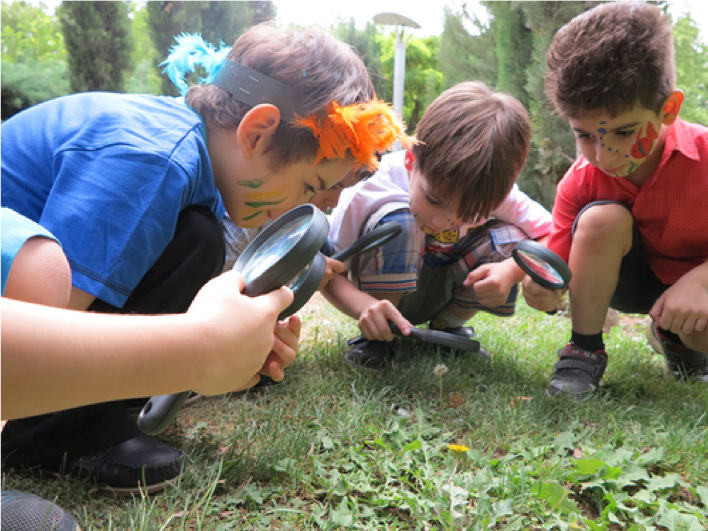 “I’m interested in the particularity of each Tree – it’s ‘thisness’ (haecceitas)”, claims Canadian land-artist, photographer, and poet Marlene Creates, thus hinting both at the specificity of each singular tree and at the uniqueness of certain species at different latitudes. Literature, among other arts, such as film, photography, the fine arts, is one of those privileged terrains where Trees definitely enter our field of vision, our epistemic knowledge, our sensorial experience. In literary and artistic productions, Trees are ethically and aesthetically called into question (evoked, invoked, iconized, prized, iven attacked), with the aim to identify, describe, or allegorize their singularities and specificities, or to pay homage to their material, literal, cultural, ethnic, and symbolic meaning through a variety of textualities, including the new media.
“I’m interested in the particularity of each Tree – it’s ‘thisness’ (haecceitas)”, claims Canadian land-artist, photographer, and poet Marlene Creates, thus hinting both at the specificity of each singular tree and at the uniqueness of certain species at different latitudes. Literature, among other arts, such as film, photography, the fine arts, is one of those privileged terrains where Trees definitely enter our field of vision, our epistemic knowledge, our sensorial experience. In literary and artistic productions, Trees are ethically and aesthetically called into question (evoked, invoked, iconized, prized, iven attacked), with the aim to identify, describe, or allegorize their singularities and specificities, or to pay homage to their material, literal, cultural, ethnic, and symbolic meaning through a variety of textualities, including the new media.
Similarly, pioneering forest ecologist Nalini Nadkarni reminds us that in order to be fully understood and appreciated Trees should be looked at in multiple ways, thus fostering the interplay of science and the humanities. Intertwining the symbolic with the personal, the scientific with the spiritual, the mythic with the functional, Nadkarni invites us to consider a Tree as axis mundi, an imaginary line that connects Earth and Sky, but also the individual with the communal. Trees, in fact, are at once single entities and part of a wider community and environment that secretly communicate with each other (Wohlleben 2016, Mancuso 2017) through their roots and a fungal network nicknamed Wood Wide Web.
Silently and invisibly, trees share information, register pain, learn things, and even protect themselves and each other to the point of becoming arboreal cybercrimes by hijacking the whole system and sabotaging their rivals. Finally, Trees are sites of naturecultural memory: their rings record generations of human and nonhuman encounters and narrations, together with their mutual interference in the shaping of our identities.
The aim of this one-day international and interdisciplinary colloquium is to attract scholars, artists, experts in various fields to explore and assess the presence, value, and stance of Trees and Tree-like epistemic structures (arborescence vs ryzome, tree-shaped flows) in the Anthropocene.
It is intended that selected papers will be developed as chapters for an international publication.
Proposals from any discipline are invited and may address but are not limited to the following topics:
– Trees and their representations in literatures and the arts
– Metamorphoses of humans and non-humans into trees
– New (invented/fantastic) species vs extinctions of Trees
– Trees and identity, ethnicity, nationality





 As educators and environmental educators of the WEEC Network, having overcome these difficult months of lockdown, we feel more than ever the importance of dedicating a focus to teaching methodologies.
As educators and environmental educators of the WEEC Network, having overcome these difficult months of lockdown, we feel more than ever the importance of dedicating a focus to teaching methodologies. Water quality and quantity are very crucial for sustaining life in many parts of the world. In many parts of the world communities are suffering from water scarcity due to population growth, climate change and technological development.
Water quality and quantity are very crucial for sustaining life in many parts of the world. In many parts of the world communities are suffering from water scarcity due to population growth, climate change and technological development. Environmental attitudes and knowledge have been shown to have very different effects on behavior change depending, among others, on geographic contextual factors (Braun, Cottrell & Dierkes, 2017). Place-based education (PBE) approaches not only promote greater awareness of local environments, culture and history, but they can engender the individual attachment to nature. It was shown by Orr (1994) and Kudryavtsev, et al (2012) that place attachment can help promoting pro-sustainable behavior.
Environmental attitudes and knowledge have been shown to have very different effects on behavior change depending, among others, on geographic contextual factors (Braun, Cottrell & Dierkes, 2017). Place-based education (PBE) approaches not only promote greater awareness of local environments, culture and history, but they can engender the individual attachment to nature. It was shown by Orr (1994) and Kudryavtsev, et al (2012) that place attachment can help promoting pro-sustainable behavior. The journal Education for the Environment: Regards – Recherches – Réflexions will host the proposals for articles from a paper presented at the World Environmental Education Congress. Recognized as a reference journal by the High Council for the Evaluation of Research and Higher Education (HCERE) in France, it is supported by the Center for Research in Education and Training related to environment and eco-citizenship (Centr’ERE of the University of Quebec in Montreal). It is also supported by the Social Sciences and Humanities Research Council of Canada (SSHRC) and the Fonds de recherche du Québec – Society and Culture (FRQSC).
The journal Education for the Environment: Regards – Recherches – Réflexions will host the proposals for articles from a paper presented at the World Environmental Education Congress. Recognized as a reference journal by the High Council for the Evaluation of Research and Higher Education (HCERE) in France, it is supported by the Center for Research in Education and Training related to environment and eco-citizenship (Centr’ERE of the University of Quebec in Montreal). It is also supported by the Social Sciences and Humanities Research Council of Canada (SSHRC) and the Fonds de recherche du Québec – Society and Culture (FRQSC). “I’m interested in the particularity of each Tree – it’s ‘thisness’ (haecceitas)”, claims Canadian land-artist, photographer, and poet Marlene Creates, thus hinting both at the specificity of each singular tree and at the uniqueness of certain species at different latitudes. Literature, among other arts, such as film, photography, the fine arts, is one of those privileged terrains where Trees definitely enter our field of vision, our epistemic knowledge, our sensorial experience. In literary and artistic productions, Trees are ethically and aesthetically called into question (evoked, invoked, iconized, prized, iven attacked), with the aim to identify, describe, or allegorize their singularities and specificities, or to pay homage to their material, literal, cultural, ethnic, and symbolic meaning through a variety of textualities, including the new media.
“I’m interested in the particularity of each Tree – it’s ‘thisness’ (haecceitas)”, claims Canadian land-artist, photographer, and poet Marlene Creates, thus hinting both at the specificity of each singular tree and at the uniqueness of certain species at different latitudes. Literature, among other arts, such as film, photography, the fine arts, is one of those privileged terrains where Trees definitely enter our field of vision, our epistemic knowledge, our sensorial experience. In literary and artistic productions, Trees are ethically and aesthetically called into question (evoked, invoked, iconized, prized, iven attacked), with the aim to identify, describe, or allegorize their singularities and specificities, or to pay homage to their material, literal, cultural, ethnic, and symbolic meaning through a variety of textualities, including the new media. The Equator Prize 2019 will be awarded to outstanding community and indigenous initiatives that are advancing nature-based solutions for local sustainable development. Each winning group will receive USD 10,000 and will be invited to participate in a series of policy dialogues and special events during the United Nations General Assembly and the Secretary-General’s Climate Summit in New York in September 2019, culminating in a high-level award ceremony at the beginning of Climate Week.
The Equator Prize 2019 will be awarded to outstanding community and indigenous initiatives that are advancing nature-based solutions for local sustainable development. Each winning group will receive USD 10,000 and will be invited to participate in a series of policy dialogues and special events during the United Nations General Assembly and the Secretary-General’s Climate Summit in New York in September 2019, culminating in a high-level award ceremony at the beginning of Climate Week.
